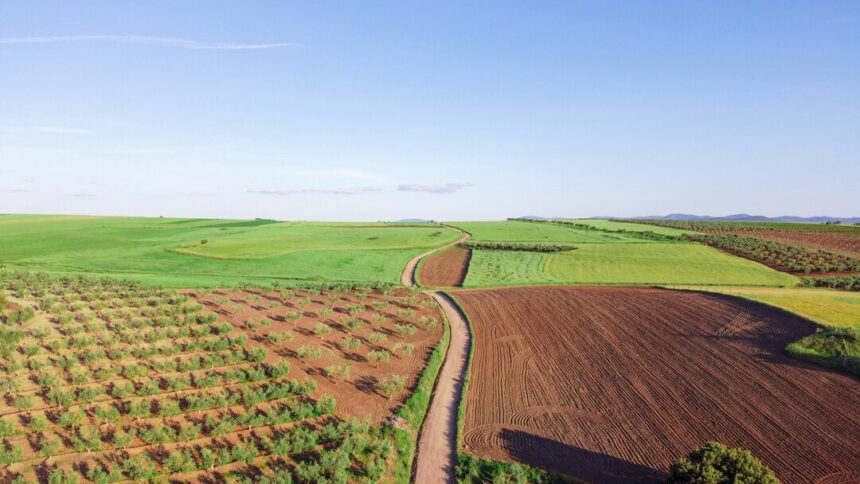Soil erosion poses a significant threat to agricultural productivity, particularly in regions prone to heavy rainfall or strong winds. For South African farmers, managing soil erosion is crucial to maintaining fertile land and ensuring long-term sustainability. This article explores practical strategies to help farmers prevent and control soil erosion effectively.
1. Understand the Causes of Soil Erosion
Soil erosion occurs when the top layer of soil is displaced by water, wind, or human activities. Common causes include:
- Intense Rainfall and Runoff: Heavy rains can wash away soil, especially on sloped or unprotected land.
- Strong Winds: Wind can carry away fine soil particles, particularly in dry, exposed areas.
- Overgrazing and Deforestation: Excessive grazing and tree removal weaken soil structure and reduce ground cover.
- Improper Tillage Practices: Excessive or poorly timed tillage can loosen soil and increase erosion risk.
Understanding the specific causes of erosion on your farm is the first step toward implementing effective control measures.
2. Adopt Conservation Tillage Practices
Conservation tillage minimizes soil disturbance, helping maintain a protective layer of organic matter on the surface. Techniques include:
- No-Till Farming: Plant crops directly into the soil without tilling. This reduces soil disruption and helps preserve moisture.
- Reduced Tillage: Limit tillage to shallow depths to minimize the impact on soil structure.
- Strip Tillage: Tilling only narrow strips where seeds will be planted helps maintain soil cover between rows.
Conservation tillage not only reduces erosion but also enhances soil health by promoting beneficial microbial activity and improving moisture retention.
3. Use Cover Crops
Planting cover crops such as clover, rye, or vetch during the off-season helps protect the soil. Cover crops provide a layer of vegetation that:
- Reduces water runoff by slowing down rain impact and encouraging water infiltration.
- Binds soil particles together, preventing them from being carried away by wind or water.
- Improves soil structure and adds organic matter as they decompose.
4. Practice Contour Farming
Contour farming involves planting crops along the natural contour lines of a slope. This technique creates natural barriers that slow water flow and reduce the risk of soil erosion. Key benefits include:
- Reduced Water Runoff: Water is retained in the furrows between rows, giving it time to infiltrate the soil.
- Enhanced Moisture Distribution: By capturing runoff, contour farming ensures more uniform moisture across the field.
5. Terracing on Steep Slopes
For farms located on hilly or mountainous terrain, terracing is a practical solution. Terraces are step-like structures built into the slope, which reduce the gradient and slow down water movement. Benefits of terracing include:
- Reduced Soil Loss: Water flow is controlled, reducing the risk of soil being washed away.
- Improved Water Retention: Water is trapped on each step, promoting infiltration and reducing runoff.
6. Plant Windbreaks
Wind erosion can be a serious issue in dry, open areas. Planting windbreaks, such as rows of trees or shrubs, can protect fields by reducing wind speed and shielding the soil from direct exposure. Common windbreak species for South Africa include acacia, eucalyptus, and cypress trees. Benefits include:
- Reduced Wind Impact: Windbreaks decrease the velocity of the wind, minimizing the removal of soil particles.
- Improved Microclimate: Windbreaks can help maintain a more stable environment, which benefits crops and reduces water loss.
7. Manage Grazing Practices
Overgrazing by livestock can strip land of vegetation, leaving it vulnerable to erosion. To manage grazing effectively:
- Implement Rotational Grazing: Rotate livestock between different pastures to allow vegetation recovery and maintain ground cover.
- Control Stocking Rates: Ensure that the number of livestock matches the carrying capacity of the land.
- Use Fencing: Designate grazing zones and protect sensitive areas, such as steep slopes and riverbanks, with fencing.
8. Build Check Dams and Diversions
In areas with heavy rainfall or water flow, check dams and diversion channels can help manage water movement. Check dams are small barriers built in waterways to slow water flow and promote sediment deposition. Diversion channels redirect water to safer areas to prevent field erosion.
9. Maintain Vegetative Buffers
Vegetative buffers are strips of grass, shrubs, or trees planted around fields, riverbanks, and drainage areas. These buffers act as barriers that trap sediment and slow water runoff. Benefits include:
- Erosion Control: Vegetative buffers prevent soil particles from being carried away by water.
- Water Quality Improvement: Buffers filter pollutants and sediments, preventing them from reaching nearby water bodies.
10. Incorporate Organic Matter
Enhancing soil organic matter improves soil structure, making it more resistant to erosion. Practices such as adding compost, manure, or decomposed plant material can:
- Increase Water-Holding Capacity: Organic matter helps soil absorb and retain moisture, reducing runoff.
- Enhance Soil Stability: Rich organic soils are less likely to break apart under rain or wind impact.
Soil erosion management is essential for sustainable farming and long-term productivity. By adopting a combination of practices such as conservation tillage, cover crops, contour farming, and strategic windbreaks, South African farmers can protect their soil, improve crop yields, and build resilience against environmental challenges. The investment in soil conservation today ensures that farms remain productive and sustainable for generations to come.
Join 'Farmers Mag' WhatsApp Channel
Get the latest Farming news and tips delivered straight to your WhatsApp
CLICK HERE TO JOIN






